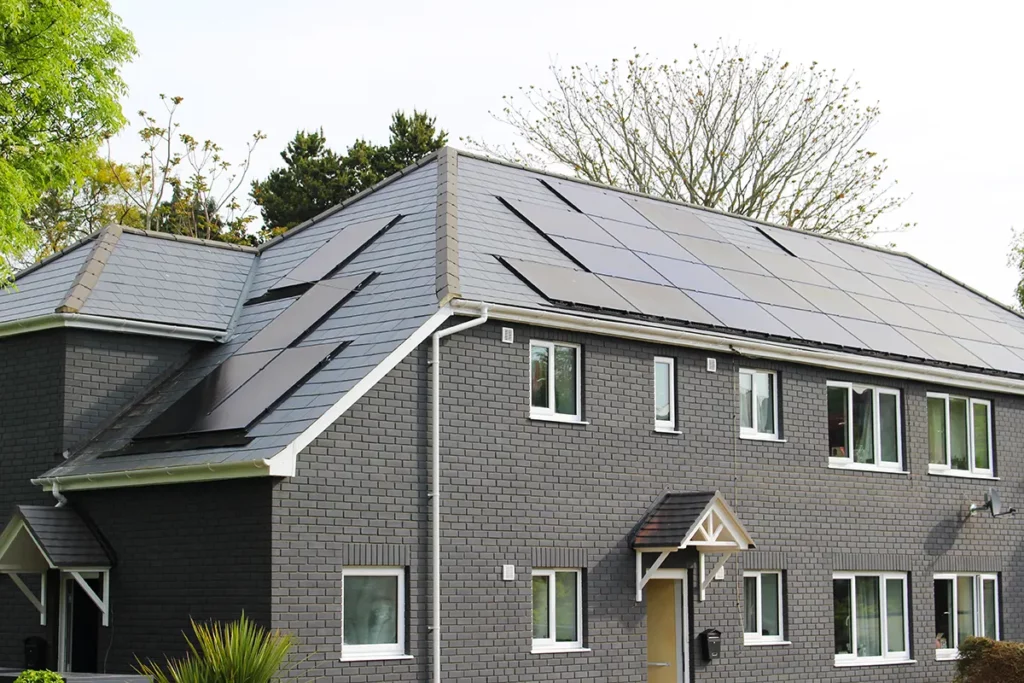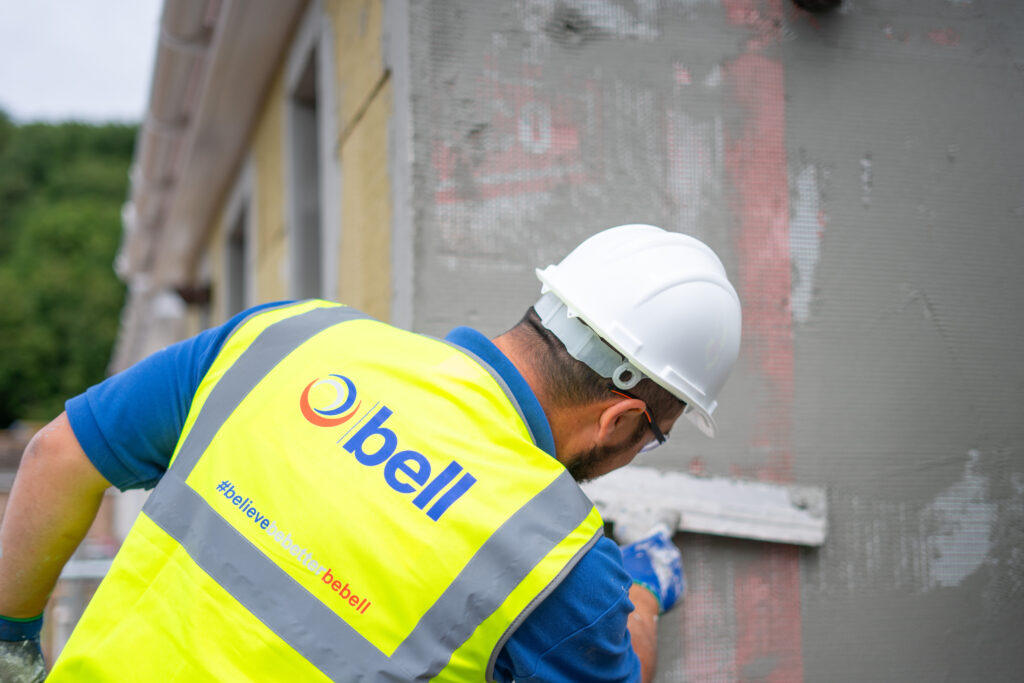Retrofits: Enhancing Energy Efficiency in Social Housing
Explore the pivotal role of retrofits in elevating energy efficiency within social housing. This article delves into how strategic energy efficiency retrofits can contribute to cost savings, sustainability, and improved living conditions for residents.
Understanding the Importance of Energy Efficiency in Social Housing
Fuel poverty is a grim reality for many people in the UK, especially those who live in social housing. This casts a shadow on well-being and contributes to social inequality. Add the growing threat of climate change, and the picture is dismal.
According to HM Government’s Department of Energy Security & Net Zero’s annual fuel poverty statistics, an estimated 13.4% of England’s households live in fuel poverty, with social housing residents in the least energy-efficient houses using as much as 17.3% of their income to pay for heating alone. An Inside Housing and Aico survey revealed that 80% of social housing landlords reported an increase in residents actively seeking financial support since April 2022.
However, this is not a situation without hope. Energy efficiency retrofits can play a significant role in reducing utility costs for social housing residents and landlords while also offering environmental benefits such as reducing carbon emissions and mitigating climate change. According to the World Economic Forum, buildings account for 39% of global energy-related carbon emissions, with 11% contributed by materials and construction, and 28% from operations.
Retrofitting buildings for greater energy efficiency can reduce carbon by 50-75% than constructing the same building from scratch. Deep retrofits that lower operating costs, improve thermal comfort and indoor environmental quality, and increase asset value can save energy and operating greenhouse gas (GHG) emissions by 30-50%

Assessing the Current State of Social Housing Energy Efficiency
Various energy efficiency standards for social housing are in place around the UK. In England, social housing must achieve an Energy Performance Certificate (EPC) rating of C or higher by 2030 and net zero by 2050, while in Scotland, homes must reach EPC B by the end of 2035 and net zero by 2045. In Wales, all social housing (with exemptions for some properties) must reach EPC A by 2033 and net zero by 2050.
These are ambitious goals, but several challenges stand in the way of achieving them. A recent Housing Sector Survey found that 58% of landlords said that financial capacity is the greatest challenge to retrofitting social housing for energy efficiency. Among the other significant challenges were properties’ technical limitations and supply chain issues.
Allowing these and other challenges to stand in the way of energy efficient retrofits can have serious implications that go beyond higher energy bills for social housing residents. Insulation and ventilation are two issues that residents commonly express dissatisfaction with, and these issues can be linked with other potentially hazardous problems such as damp, condensation, and mould. These problems can lead to respiratory issues, circulatory problems, mental health symptoms, and other health problems. In addition to helping address these related problems, proper insulation and ventilation can make social homes 16% more energy efficient.
Fortunately, social housing retrofits offer good potential for improvement. In addition to lowering fuel costs, retrofits can help reduce or eliminate problems such as damp and mould, resulting in healthier living conditions.
For example, replacing all halogen bulbs in a house with low-wattage LED lightbulbs can reduce carbon dioxide emissions by 50kg annually and save between £4 to £15 per bulb per year. In addition to decreasing draughts and enhancing heat retention, fitting draught-proofing to doors and windows can save a typical home approximately £60 a year.
Retrofitting Solutions for Energy Efficiency
A wide range of options are available to landlords who are looking at energy efficient retrofits for social housing. Among them are:
- Cellulose, fiberglass, foam board, or spray foam interior wall insulation.
- Thermal break solutions for cold bridging mitigation.
- Continuous insulation systems, cladding systems, and rigid foam insulation for exterior wall insulation.
- Cellulose, fiberglass, or other types of attic or roof insulation
- Floor insulation, especially over basements, crawl spaces, and other unheated or uninsulated spaces.
- Double or triple-glazed windows to reduce heat loss and improve energy efficiency.
- Energy-efficient doors with proper seals to prevent heat loss and draughts.
- Air sealing (sealing cracks and gaps in the building’s outer envelope to reduce heat loss).
- Mechanical Ventilation Heat Recovery (MVHR), Heat Recovery Ventilation (HRV), and Energy Recovery Ventilation (ERV) systems.
- Smart thermostats for better heating and cooling management.
- Cool roofs using reflective materials or green roofs using vegetation to improve insulation and reduce heat gain.
- Renewable energy systems such as solar panels or air source heat pumps.
- Rainwater harvesting for irrigation or other non-drinking purposes.
As mentioned, there are a number of benefits to retrofitting social housing. One of the main benefits is improved energy efficiency and the cost effectiveness that comes with it. In addition to alleviating the pressure on heating systems, energy efficient retrofits result in reduced energy costs and long-term savings, with the payback period for some retrofits being as little as five to 10 years. Among the other benefits are greater environmental friendliness and sustainability, higher property values, the preservation of history and cultural heritage, and the reduction of urban sprawl.
A good example of a successful social housing retrofit that improved energy efficiency and reduced energy bills for residents was our work on an ERDF Energiesprong refurbishment project for Sanctuary Housing Group.
Overcoming Barriers to Retrofit Implementation
Landlords and contractors encounter various barriers and challenges when retrofitting social housing. Some of the most common challenges include:
- Site constraints such as limited access or space.
- Ensuring the integrity and structural compatibility of new and existing components.
- Managing the project’s schedule and cost.
- Landlords’ and residents’ knowledge gap (unfamiliarity with retrofitting).
- Lack of political commitment leading to lack of trust and slow uptake by landlords.
Thankfully, it’s possible to overcome these and other challenges by implementing strategies and best practices for social housing retrofits. Some ways to do this include:
- Identifying barriers such as technical limitations, regulatory hurdles, and financial constraints, as well as potential solutions such as green financing options grants, and tax credits.
- Collaborating with experts and engaging stakeholders to gather different perspectives, gain support and guidance, and instil a sense of ownership in the project.
- Working with local authorities and building code officials to ensure regulatory compliance and to adapt building codes where necessary.
The GLA Accelerator Programme, a £10 billion, 10-year framework, utilising Energiesprong principles, is a good example of a successful partnership between social housing providers, contractors, and local authorities in delivering effective retrofitting solutions. Bell is one of four partners on this collaborative framework.
Maximising the Impact of Retrofitting on Social Housing Communities
Energy efficiency retrofits can offer broader social and economic benefits for social housing communities. Among these broader benefits are job creation, skills development, addressing fuel poverty, and community empowerment for enhanced social cohesion within diverse communities.
Small- and medium-sized enterprises can gain by investing in retrofitting, workforces can learn new skills by transitioning toward green construction, and communities can be empowered through improved mental and physical health and through their financial savings on utility bills.

The Future of Energy Efficiency in Social Housing
A few emerging trends and innovations indicate a promising future for energy efficiency retrofits in social housing. Some of these trends and innovations include upgrading lighting systems to energy-efficient alternatives such as LED lights that consume as much as 75% less energy than traditional bulbs, and smart technologies for building automation and centralised control of various systems for reduced energy consumption, more efficient resource use, and real-time monitoring.
These trends also include green roof installations that can help improve air quality, reduce stormwater runoff, and reduce cooling energy demand by 75% during summer, window and insulation upgrades for reduced heating and cooling costs, and renewable energy integration.
Given the cost, regulatory issues, and knowledge and skills gap among landlords and social housing communities, government policies, funding mechanisms, and industry partnerships are essential for driving the uptake of social housing retrofits for enhanced energy efficiency. Lawmakers should strive to reduce red tape and impractical or restrictive policies and codes, and the government must consistently do its part in making various funding mechanisms available to landlords, while industry partnerships should aim at effective and fruitful collaboration.
Retrofitting: The Way Forward
Retrofitting plays a crucial role in enhancing energy efficiency, sustainability, and liveability within social housing communities. By prioritising strategic retrofitting solutions, social housing providers can unlock cost savings, reduce carbon emissions, and improve quality of life for residents. Through collaboration, innovation, and targeted investments, the future of energy efficiency in social housing holds promising opportunities for positive social, environmental, and economic impacts.
If you’re interested in finding out more about retrofitting in social housing, contact Bell for to discuss our retrofitting and energy services in the UK.
